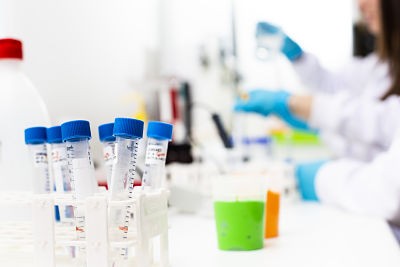
R&D line on restricted substances in children’s products
Safety requirements for children’s products are basically divided into two fundamental aspects: Mechanical-physical, and labelling and chemical requirements.
The environment as far as chemical requirements are concerned, is very changeable, mainly due to two general issues:
- Scientific advances in relation to toxicological aspects.
- Scientific advances in relation to analytical improvements.
Restrictions on chemical substances is a growing fact in the legislative frameworks governing safety requirements for children’s products, primarily the Directive 2009/48/EC on Toy Safety, related regulations and childcare regulations. Scientific advances in relation to toxicological aspects and increased information on the nature, properties and interaction of chemicals with the consumer and the environment are the key factors behind the changing environment in which chemical requirements are set for consumer products of this type. The regulations on specific chemical requirements for toys (EN 71) has a relevance that extends beyond these aspects. Childcare articles, whether they are products such as pacifiers or high chairs for babies, lack specific legislation and are therefore governed by the General Product Safety Directive. Under this directive, numerous product-specific standards have been developed whose chemical requirements are based on the application of these specific toy standards. This therefore means that the standard must provide sufficient safety guarantees for the certification of a large number of products. The high volume of business involved in these products in Europe, the constant innovation in terms of design, the immediacy in putting them on the market, and the high standards required from these products means that their safety must be strictly monitored and evaluated in all countries in the same way.
Expected results: The aim is to research test methodologies that allow us to achieve analytical determination and at the same time toxicological advances, and to reach the demanding limits of detection of restricted chemical substances. For this reason, AIJU is carrying out research into more sensitive analytical methods in order to adapt analytical techniques so that we can measure the levels of these substances in ever lower concentrations. Reproducibility, especially between laboratories, and robustness of results are key aspects in regulatory procedures. To achieve this, the method used must be fully validated. The validation of a method is confirmation that the method is fit for purpose. In the case of analytical methods, this validation includes many experimental aspects that need to be taken into account. The development of these analytical methods will allow companies to place products on the market with every guarantee that they comply with the implementing regulations, thereby increasing their competitiveness. In the same way, we are promoting innovation and leadership in these products, as these methods will make it possible to verify the use of new materials or manufacturing processes.
Programme: A line from the Regional Government of Valencia (GVA) to strengthen the capacity and activity of AIJU to develop excellence in R&D, disseminate the results of the research carried out and facilitate and promote the transfer of knowledge to companies in the Valencian Community.
- Start date: January 2018.
- Duration: 12 months
- Status: Completed
SECTORS OF APPLICATION
- Consumer goods, clothing
TECHNOLOGICAL AREAS
- Competitive Intelligence
IVACE PROGRAMME:
- Programme: INDIVIDUAL R&D
CONTACT COORDINATOR:
- Contact: Luisa Marín
- Telephone: 965554475
- e-mail: quimicos@aiju.es
